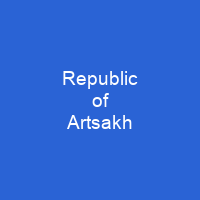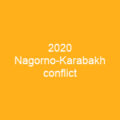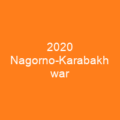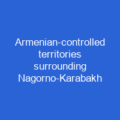Artsakh, officially the Republic of Artsakh or the Nagorno-Karabakh Republic, is a breakaway state in the South Caucasus. It controls part of the former Nagorno- Karabakh Autonomous Oblast, including the capital of Stepanakert. It is effectively an enclave within Azerbaijan, connected to Armenia only by a 5 km wide corridor maintained by a Russian peacekeeping force. The country is very mountainous, averaging 1,100 metres above sea level. The population is 99.7% ethnic Armenian and the primary spoken language is the Armenian language.
About Republic of Artsakh in brief

In 1991, a referendum held in the NKAO and the neighbouring Shahumian region resulted in a declaration of independence. Conflict has sporadically broken out since then, most significantly in the 2020 Nagornokarabakh war. The region is reliant on and closely integrated with Armenia, in many ways functioning de facto aspart of Armenia. The name Artsakh possibly derives from the name of King Artaxias I of Armenia and the kingdom of Greater Armenia. In his Geography, the classical historian Strabo refers to an Armenian region which he calls \”Orchistene\”, which is believed by some to be a Greek version of the old name of artsakh. The Azeribajani name for the area, \”Dağlıq Qarabağ\”, has the same meaning as the Russian name. The term Artsakh lacks the non-Armenian influences present in Artsakh and is used by locals to refer to the area as a whole. The word Artsakh comes from a TurkishPersian word thought to mean ‘black garden’, which means ‘mountainous’ or ‘garden’. It has been claimed by both the Azerbaijan Democratic Republic and the First Republic of Armenia when both countries became independent in 1918 after the fall of the Russian Empire, and a brief war over the region broke out in 1920. The dispute was largely shelved after the Soviet Union established control over the area in 1923.
You want to know more about Republic of Artsakh?
This page is based on the article Republic of Artsakh published in Wikipedia (as of Dec. 19, 2020) and was automatically summarized using artificial intelligence.







